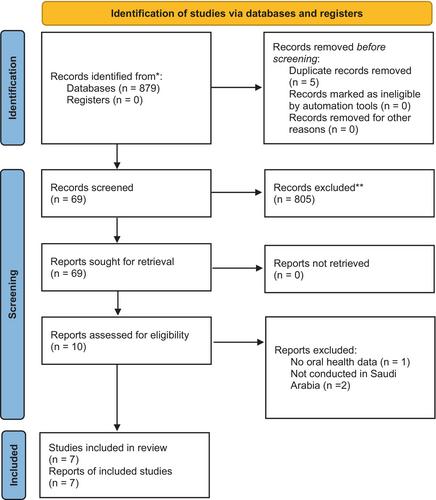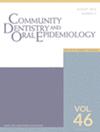This systematic review aimed to comprehensively summarize and critically assess studies conducted on oral health outcomes among individuals with cerebral palsy (CP) in Saudi Arabia.
This study followed the Participants, Exposure, Control and Outcomes (PECO) framework to formulate a focused research question. We conducted an extensive literature search across multiple databases, including PubMed, Medline, Scopus and Embase, in addition to clinical trial registers. Inclusion criteria encompassed clinical studies conducted in either English or Arabic, focusing on CP as defined by the International Classification of Diseases 10 (ICD10), and examining various oral health conditions and parameters. Nonclinical studies, commentaries, other systematic reviews and letters to the editor were excluded. Data extraction included comprehensive information about the study characteristics, oral health outcomes (dental, oral or periodontal disease; changes in standardized indices; dental trauma and other types of oral diseases) and an assessment of the risk of bias using the Appraisal Tool for Cross-Sectional Studies (AXIS).
The initial search yielded a total of 879 articles, ultimately resulting seven studies that met our stringent inclusion criteria. All of these studies were conducted as cross-sectional investigations in different cities within Saudi Arabia. The sample sizes ranged from 46 to 400 participants, all falling within the age range of 2–18 years. Notably, the prevalence of dental caries among individuals with CP in these studies varied significantly, with rates ranging from 52.9% to as high as 98.6%. Additionally, a substantial portion of CP patients exhibited poor oral hygiene, with figures ranging between 34.6% and 66.2%, and dental trauma was reported in 47.5% of the cases. Moreover, these studies underscored the influence of motor function and intellectual disabilities on the oral health status of CP individuals. Furthermore, various secondary outcomes, including periodontal parameters and oral health-related quality of life, were also assessed. However, it is essential to acknowledge that several sources of bias were identified within these studies, raising questions about the generalisability of their findings.
In conclusion, the systematic review revealed a concerning pattern of high dental caries prevalence and other oral health issues among individuals with CP in Saudi Arabia. Nevertheless, the need for comparative studies between CP patients and those without CP is evident to establish a definitive understanding of the oral health status of CP individuals. Initiating early interventions such as oral hygiene education, preventive dentistry programs, and orthodontic interventions could potentially contribute to improved oral health outcomes for individuals with CP in Saudi Arabia.



